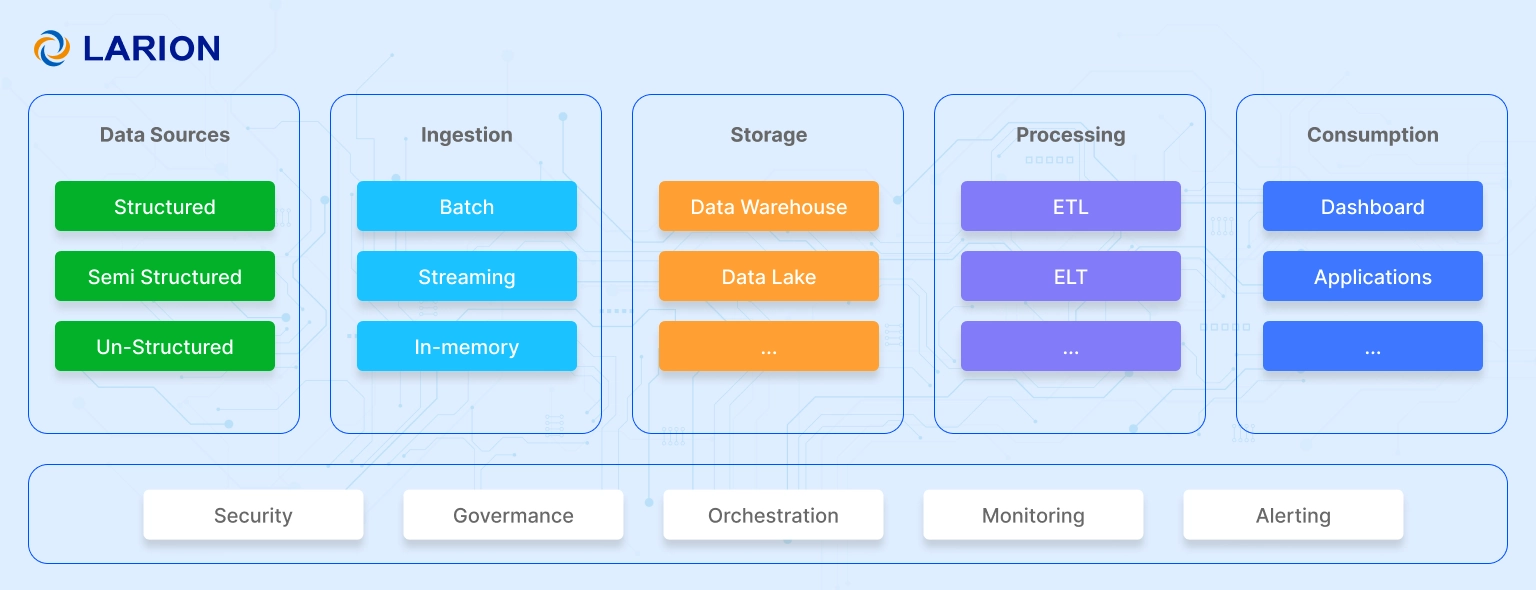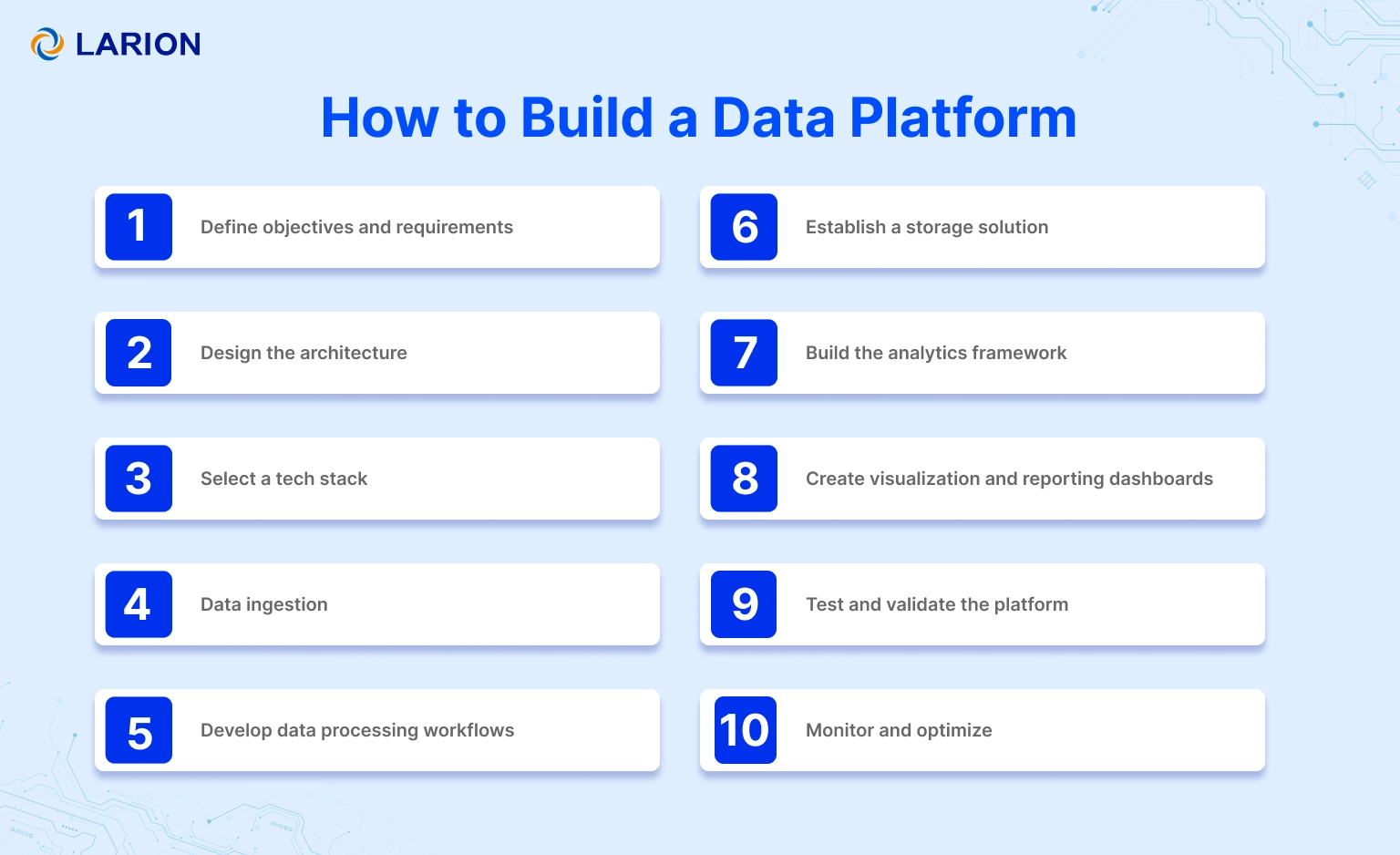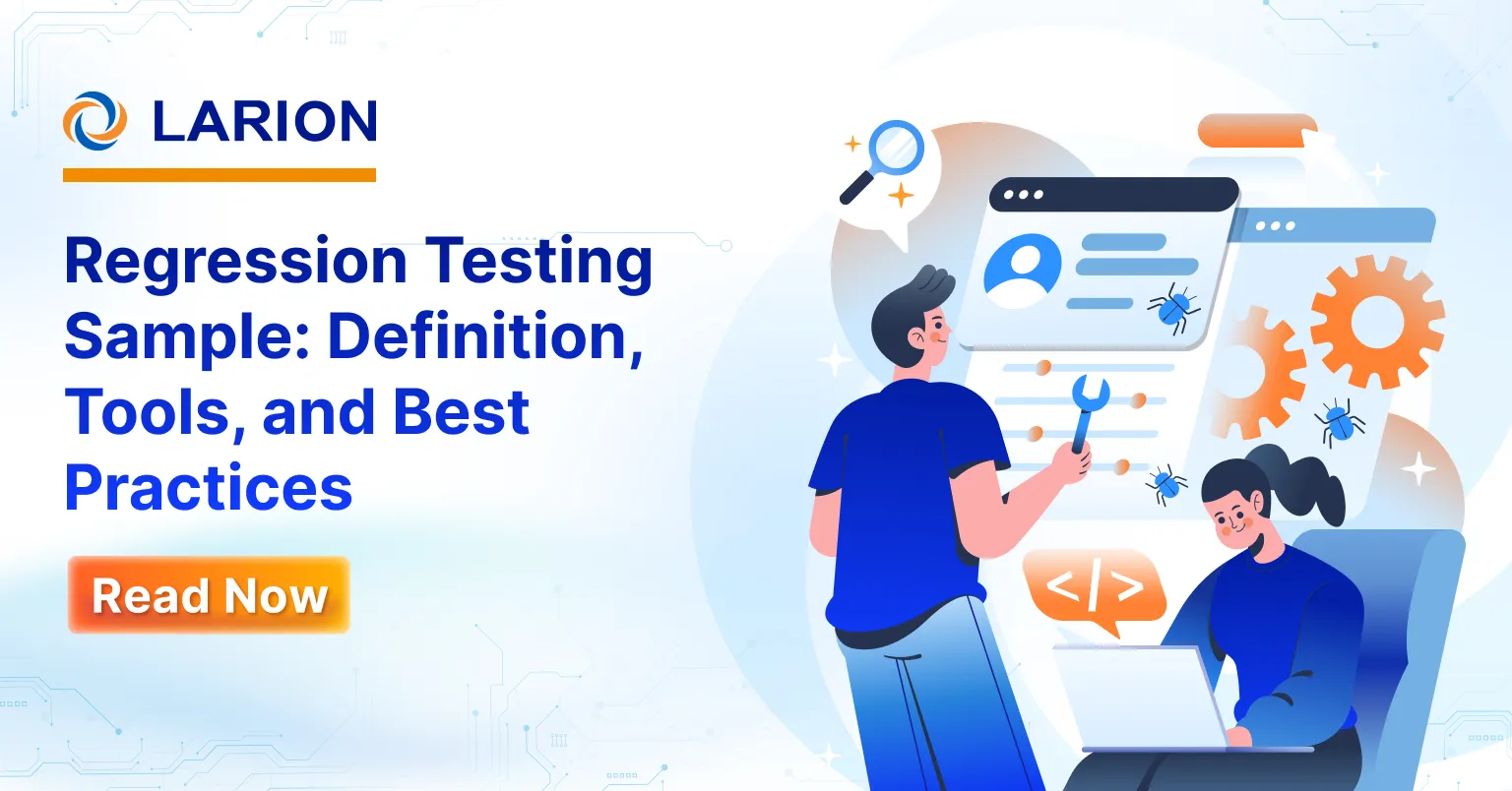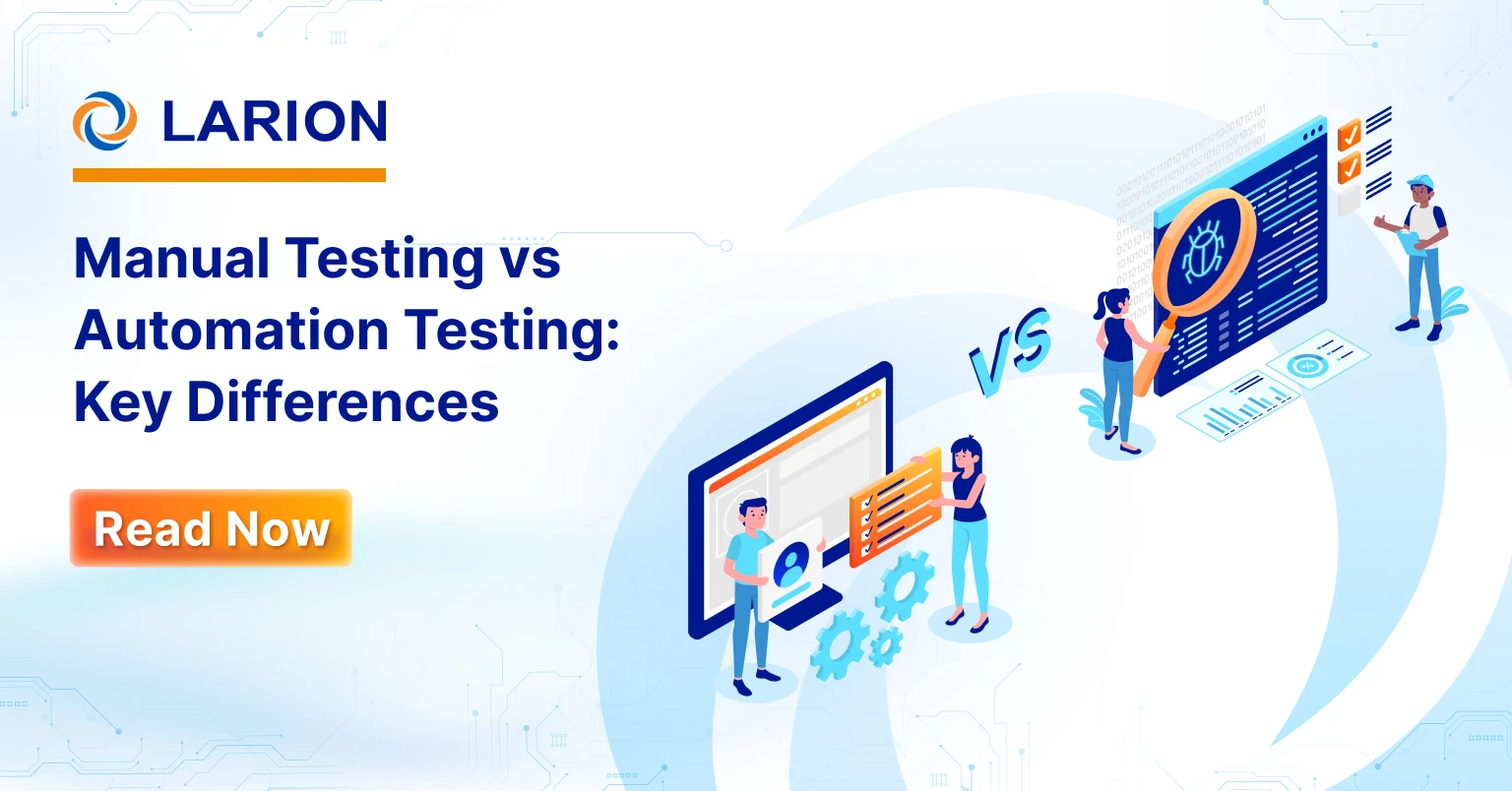
According to Forrester, advanced insights-driven businesses are eight times more likely to achieve 20% or more growth compared to others. This remarkable advantage stems from the ability to harness data analytics effectively —a process that relies heavily on a well-designed data platform. These platforms play a critical role in uncovering hidden patterns, extracting valuable insights, and driving strategic decision-making.
So, do you really need a data platform? And if it is key to your business growth, how can you build a platform that aligns with your organization’s architecture and goals? Let’s dive right in!
What is a Data Platform?
A data platform is a centralized repository and processing hub for an organization’s data. It handles the collection, cleansing, transformation, and application of data to generate valuable business insights.
Do You Need a Data Platform?
A data platform becomes essential for organizations in various scenarios. Here are some key situations that highlight the necessity of such a platform and its benefits:
Complex data processing needs
When businesses deal with massive amounts of data from diverse sources—such as customer interactions, operational data, and market trends—they require a robust platform to integrate, process, and analyze this data efficiently. By automating data collection, processing, and analysis, these platforms streamline workflows, saving time and resources. This allows teams to focus on interpreting results and implementing changes rather than getting bogged down in manual data handling.
Advanced analytical capabilities
When an organization seeks to leverage advanced analytics techniques like predictive modeling or AI/ML, a dedicated data platform is crucial. These platforms often provide the necessary tools and infrastructure to implement sophisticated analytical models. By analyzing customer data, businesses can tailor their products, services, and marketing efforts to meet specific customer needs and preferences, resulting in increased customer satisfaction and loyalty.
Scalability
As businesses grow, their data needs often expand. A data analytics platform provides the scalability required to handle increasing data volumes and complexity without significant infrastructure changes.
5 Types of Data Platform
Here are 5 different types of data platform
| Enterprise data platform (EDP) | Modern data platform | Cloud data platform | Big data platform | Customer data platform (CDP) | |
| Purpose | Centralized platform for managing and analyzing all enterprise data | Extend EDP capabilities with more advanced technologies | Data storage, processing, and analytics on the cloud | Processes and analyzes large-scale, complex datasets | Unifies customer data from multiple sources to create a 360° customer view |
| Data types | Structured data | Structured
semi-structured, and unstructured data |
Structured, semi-structured, and unstructured data | Primarily unstructured and semi-structured data | Primarily structured, focused on customer attributes and interactions |
| Scalability | Limited scalability, usually on-premises | Highly scalable, often using cloud or hybrid solutions | Very high scalability, depending on cloud provider | Highly scalable with distributed processing | Scalable to handle growing customer data from multiple channels |
| Deployment | Primarily on-premises | On-premises, cloud, or hybrid | Cloud-only | On-premises or cloud, but focused on distributed setups | Cloud-based or hybrid to support real-time, multi-channel data |
| Data processing | Batch processing with some real-time capabilities | Real-time, batch, and streaming processing | Real-time, batch, and on-demand processing | Primarily batch, with streaming capabilities | Real-time data ingestion and processing to capture customer interactions |
| Key components | Data warehouse, ETL tools, BI tools | Data lake, data warehouse, ETL/ELT, machine learning | Cloud storage, ETL/ELT, machine learning | Data lake, distributed storage and processing | Customer profiles, identity resolution, segmentation, analytics, and activation |
| Example tools | Oracle EDP, SAP Data Hub | Databricks, Snowflake, Microsoft Azure Data Services | AWS Redshift, Google BigQuery, Azure Synapse | Hadoop, Apache Spark, Cassandra, Cloudera | Salesforce CDP, Segment, Adobe Experience Platform, Oracle CX Cloud |
Data Platform Architecture

Data analytics architecture can vary significantly between different platforms, as layers can be organized and combined in various ways to suit specific use cases and data flows. However, here are fundamental data layers that form the foundation for effective data solutions
Data storage
This initial layer is crucial as it provides a location to store your data before it is transformed and analyzed. Having a robust data storage solution is especially important when managing large volumes of data that need to be retained for extended periods. It ensures that your data is readily accessible for analysis whenever required.
Ingestion layer
Data platforms require effective mechanisms to ingest data from various sources into the storage layer. This process can utilize batch ingestion methods, real-time streaming, or a combination of both approaches. Common tools and technologies employed for data ingestion include Apache Kafka, AWS Kinesis.
Despite the wide range of ingestion tools available in today’s market, some data teams opt to develop custom code to ingest data from both internal and external sources. Many organizations even create their own tailored frameworks to manage this process.
Processing & transformation layer
Once data is stored (or integrated with the ingestion process), it typically requires processing and transformation before it can be analyzed or utilized by applications. Data processing can occur in real time or through scheduled batch processing at specific times during the day.
Both techniques can be implemented using either extract-transform-load (ETL) or extract-load-transform (ELT) methods. For handling larger volumes of data, the ELT approach is generally preferred due to its performance advantages. Key tools for data transformation and processing include Databricks, Athena, and Starburst.
Storage layer
After data is ingested from the data source layer and processed in the transformation layer, it’s stored in the storage layer. This layer of a data platform serves several important functions:
- It provides data access to consumers, including data scientists and developers.
- It safeguards the data against errors and system failures.
- It enables long-term data archiving.
Various technologies can be used to implement the storage layer of a data platform, including:
- NoSQL databases
- Hadoop Distributed File Systems (HDFS)
- Cloud storage solutions
- In-memory databases
Analytics layer
In this layer, the layer is designed to analyze data and extract valuable insights by applying various analytics algorithms. These algorithms may include descriptive and exploratory analytics, as well as more advanced techniques based on machine learning and neural networks.
Visualization layer
The insights derived from the analytics layer are presented to end users in the visualization layer, typically through business intelligence (BI) dashboards. These dashboards enable users to explore the data more thoroughly than they could with static data reports.
Modern BI tools include Tableau, Looker, Sigma, and Superset.
10 Steps to Build a Data Platform

Data platform engineering involves several key steps to ensure it meets your organization’s needs for data management, analytics, and insights. Here’s a structured approach to creating a robust data platform:
1. Define Objectives and Requirements
- Determine the specific use cases for the data platform, such as analytics, reporting, or machine learning.
- Collaborate with stakeholders (data scientists, analysts, IT teams) to understand their data needs, including data sources, volume, and expected outcomes.
2. Design the Architecture
- Select data architecture (e.g., Lambda, Kappa) based on your processing requirements (batch vs. real-time).
- Map out the data flow from source systems to the target data platform.
3. Tech Stack Selection
- Choose appropriate storage solutions (e.g., cloud storage, NoSQL databases, data lakes).
- Select tools for data transformation and processing (e.g., Apache Spark, Apache Flink, Databricks).
- Decide on analytics and visualization tools (e.g., Tableau, Power BI, Looker).
4. Data Ingestion
- Connect to your data sources (e.g., databases, APIs, files).
- Automate data ingestion processes using ETL/ELT tools or data pipelines.
- Ensure data quality through cleaning, validation, and standardization.
5. Develop Data Processing Workflows
- Create workflows for data transformation based on the ETL or ELT approach.
- Use orchestration tools (e.g., Apache Airflow) to automate data processing tasks.
6. Establish a Storage Solution
- Implement a storage solution that meets performance and scalability needs.
- Set up data governance policies for security, access control, and compliance.
7. Build the Analytics Framework
- Choose appropriate algorithms for the required analytics (descriptive, predictive, prescriptive).
- If applicable, integrate machine learning frameworks (e.g., TensorFlow, PyTorch) for advanced analytics.
8. Create Visualization and Reporting Dashboards
- Develop BI dashboards to visualize insights, ensuring they are user-friendly and interactive.
- Allow users to explore data independently through intuitive tools.
9. Test and Validate the Platform
- Perform thorough testing to ensure data accuracy, system performance, and user experience.
- Involve stakeholders in the testing process to refine the platform based on their feedback.
10. Monitor and Optimize
- Use monitoring solutions to track system performance, data quality, and usage.
- Regularly review the platform’s performance and make necessary adjustments based on user needs and technological advancements.
Key Data Platform Capabilities
When selecting or building a data platform, certain key features are essential to ensure effectiveness and efficiency
Data Ingestion and Integration
Enable organizations to handle diverse data sources, including structured, semi-structured, and unstructured data from databases, APIs, IoT devices, and cloud storage. It includes processes for data transformation and cleaning, ensuring consistency and quality, along with mechanisms for data validation and quality assurance to verify accuracy and compliance with standards
Data Storage and Management
Provides the capacity to accommodate large volumes of data and future growth, offering options like data lakes and warehouses for storing both raw and processed data. The platform should also incorporate data governance and metadata management tools to oversee data access, security, and lineage
Data Processing and Analytics
Supports both real-time and batch processing for immediate and historical analysis. Advanced analytics capabilities can be applied to enable the use of complex techniques such as machine learning, AI, and statistical modeling, while data visualization and reporting tools help create interactive dashboards and reports to communicate insights effectively
Data Security and Privacy
Includes robust security measures, such as encryption and access controls, to protect sensitive data, along with compliance with regulations like GDPR, HIPAA, and CCPA. Techniques for data privacy and anonymization ensure that personal and sensitive information remains secure.
Additional Features:
- Self-service analytics: Empowering users to access and analyze data independently.
- Data catalog and discovery: Tools to search, find, and understand data assets.
- Data collaboration and sharing: Facilitating teamwork and knowledge sharing among data teams.
- Data observability and monitoring: Tracking data pipelines, identifying issues, and ensuring data health.
Unlocking Business Efficiency with Advanced Data Platforms
If you’re considering building a data platform to enhance your business efficiency, LARION is here to help. With over 20 years of experience, we have successfully developed multiple data platforms that empower organizations to gain valuable insights, drive informed decision-making, and streamline operations.
Our focus is on helping businesses unlock the full potential of their data, leading to improved performance and a stronger competitive position in their markets. Interested in exploring how a data platform can benefit your organization? Reach out to us for a conversation!





